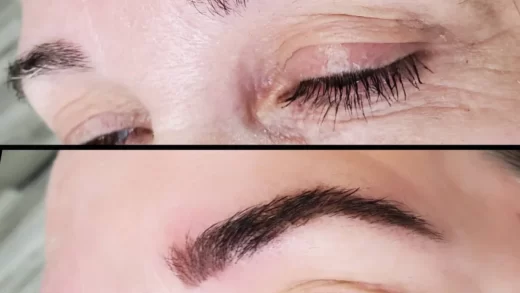Colorful tattoos are a popular way to express oneself, but sometimes, people may wish to get rid of them for various reasons. If you find yourself in such a situation, laser tattoo removal can be a viable option. However, not all lasers are equally effective in removing color tattoos. Here, we will explore the types of lasers used for removing color tattoos and how they work.
Types of lasers used for color tattoo removal
1. Q-switched lasers: Q-switched lasers are the most common type of laser used for tattoo removal. They are highly effective in targeting pigment, making them suitable for removing color tattoos. Q-switched lasers emit brief, intense pulses of light that target the tattoo ink, breaking it down into smaller particles that the body can naturally eliminate.
2. Ruby lasers: Ruby lasers are another type of laser used for color tattoo removal. They emit red light that is specifically absorbed by blue and green tattoo pigments, making them ideal for removing tattoos with these colors. However, ruby lasers may not be as effective in removing tattoos with other colors.
3. Alexandrite lasers: Alexandrite lasers emit a near-infrared light that is absorbed by a broad range of tattoo pigments. They are particularly effective in removing dark and black tattoos. However, they may require more treatment sessions to remove color tattoos compared to Q-switched lasers.
Factors to consider for color tattoo removal
1. Tattoo color and type: The color and type of tattoo you have will determine the most suitable laser for removal. Some lasers are better at targeting certain colors, so it’s important to consult with a dermatologist or a tattoo removal specialist to determine the right laser for your tattoo.
2. Skin type: Different skin types absorb laser light differently. Darker skin tones may be more susceptible to side effects such as hypo- or hyperpigmentation. It’s essential to ensure that the laser used is appropriate for your skin type to minimize any potential complications.

3. Tattoo age and depth: Older tattoos and those made with deeper ink penetration may require more treatment sessions to achieve optimal results. The depth at which the ink was deposited in the skin will determine the number of laser sessions needed for effective removal.
The laser tattoo removal process
During a laser tattoo removal session, the laser is directed at the tattooed area. The light energy from the laser is selectively absorbed by the tattoo ink, causing it to break down into smaller particles. Over time, the body’s immune system flushes out these particles, resulting in the gradual fading and removal of the tattoo.
Multiple treatment sessions are usually needed to achieve complete tattoo removal. The number of sessions required varies depending on several factors, such as tattoo size, color, and individual response to the treatment. It’s important to follow the recommended treatment plan and allow sufficient time between sessions for the body to heal.
Overall, Q-switched lasers are the most commonly used and effective lasers for removing color tattoos. Whether you have a colorful tattoo you no longer desire or want to make space for a new design, laser tattoo removal can provide a solution. Consult with a medical professional to determine the most suitable laser for your specific tattoo and begin your journey to a tattoo-free future.


